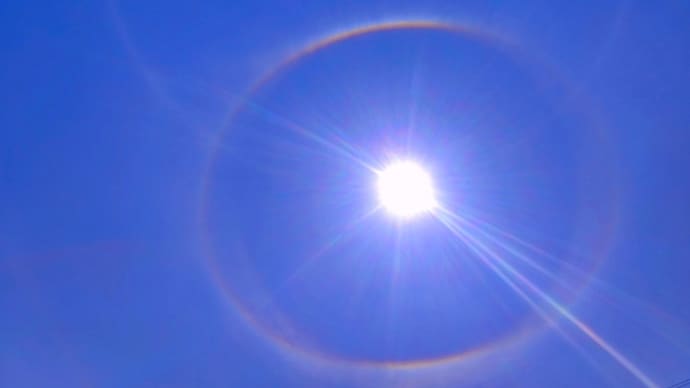Sun halos have been a common occurrence in several parts of India, however a double halo has been a rare phenomenon.

The rare Sun halo seen in Leh. (Photo: X/@DorjeAngchuk)
A rare celestial phenomenon known as a "double sun halo" was witnessed in the skies over Ladakh recently, leaving observers in awe.
This optical illusion occurs when light from the sun refracts through ice crystals suspended in cirrus clouds, creating a stunning display of concentric rings around the sun.
Sun halos have been a common occurrence in several parts of India, however, a double halo has been a rare phenomenon.
What is a Double Sun Halo?
A double sun halo is a variation of the more common 22-degree halo, where a bright ring encircles the sun. In this case, two halos are visible - an inner halo with a radius of approximately 22 degrees and an outer halo with a radius of around 46 degrees from the sun's center.
The formation of a double sun halo is a result of the unique shape and orientation of the ice crystals in the cirrus clouds. These crystals, typically hexagonal in shape, act as natural prisms, refracting and reflecting the sunlight in specific angles.
According to the Scientific American, when the ice crystals are randomly oriented, the refracted sunlight creates the inner 22-degree halo. However, if the crystals are aligned horizontally, with their flat faces parallel to the ground, an additional refraction occurs, resulting in the outer 46-degree halo.
This precise alignment of the ice crystals is rare, making the double sun halo a relatively uncommon sight, especially in regions like Ladakh, where the atmospheric conditions are ideal for such phenomena.
Significance and Observations
The double sun halo observed in Ladakh was a breathtaking spectacle, with the two concentric rings of light surrounding the sun, creating a mesmerizing display against the clear blue sky.
Astronomers and atmospheric scientists study these halos to gain insights into the atmospheric conditions and the properties of the ice crystals responsible for their formation. The observations can also help improve weather forecasting models and our understanding of atmospheric optics.
While double sun halos are not unique to Ladakh, their occurrence in this region is relatively rare, making it a captivating sight for locals and visitors alike.
Published By:
Sibu Kumar Tripathi
Published On:
Jun 18, 2024













 English (US) ·
English (US) ·